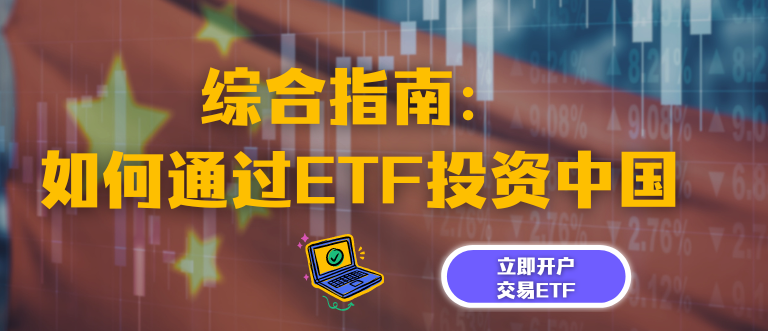Witching Hour
Table of Contents
Witching Hour
In the captivating realm of the stock market, terms like “Witching Hour” add an air of mystique and intrigue. This phenomenon, also known as Triple Witching Hour, holds significance for investors. The heightened trading activity and volatility during these specific periods offer both opportunities and challenges, making it imperative for market participants to be aware of the dynamics surrounding this intriguing phenomenon.
What is the Witching Hour?
Witching Hour, in the context of the stock market, refers to a specific period of increased trading activity that occurs on the third Friday of March, June, September, and December. This day is commonly known as “Triple Witching Day” or “Triple Witching Hour” due to the simultaneous expiration of three derivative instruments – stock options, stock index options, and stock index futures.
During the Witching Hour, the markets experience heightened volatility and increased trading activity as market participants rush to adjust or close out their positions in these derivative instruments. The convergence of these expirations creates a moment of potential turbulence, often leading to significant price swings and fluctuations in stock prices.
Understanding the Witching Hour
The dynamics of the Witching Hour are rooted in the expirations of these financial instruments. As traders and investors rush to adjust or close out their positions before the contracts expire, it results in a flurry of trading activity, higher trading volumes, and increased volatility in the markets.
Where financial markets are robust and diverse, the Witching Hour is a noteworthy event. Traders and investors brace themselves for the impact, as the simultaneous expiration of these derivatives can result in increased trading volumes and sudden price movements. The heightened volatility during this period may present both opportunities and risks for market participants.
Market participants should be aware of the potential impact on individual stocks and indices during the Witching Hour, as the simultaneous expiration of these derivatives can result in erratic market behaviour. Traders often strategise around this time, anticipating increased liquidity and volatility.
Causes of the Witching Hour
Simultaneous Expirations: The primary cause of the Witching Hour is the convergence of three significant expirations on the same day – stock options, stock index options, and stock index futures. This convergence creates a complex web of trading decisions and adjustments.
Portfolio Rebalancing: Market participants often engage in portfolio rebalancing during the Witching Hour to align their positions with changing market conditions, leading to heightened activity.
Cultural Beliefs: The Witching Hour is often linked to cultural and folklore beliefs. In various cultures, midnight has been associated with a time when supernatural activities and witchcraft are believed to be heightened.
Historical Context: Historical events, such as the Salem witch trials, have played a role in popularising the idea of the Witching Hour. The fear and paranoia surrounding accusations of witchcraft during certain periods in history have contributed to the notion that supernatural activities are more likely to occur during the late-night hours.
Media Influence: Depictions of the Witching Hour in literature, movies, and television have perpetuated the idea that midnight is a time of heightened supernatural activity. Popular culture often portrays this time as when the boundary between the living and the supernatural is blurred, influencing perceptions and beliefs.
Problems of Witching
Volatility: The Witching Hour is notorious for introducing increased market volatility, which can pose challenges for investors seeking stability and predictability in their trading strategies.
Execution Risks: Rapid and unpredictable price movements during this period can pose execution risks for traders, potentially leading to slippage and unexpected outcomes.
Impact on Stock Prices: The flurry of trading activities during the Witching Hour can impact stock prices, especially for the underlying assets associated with expiring options. Investors may experience rapid price movements, making it crucial to stay vigilant and adapt their strategies accordingly.
Increased Trading Costs: The surge in trading volumes and volatility during the Witching Hour may lead to increased trading costs. Investors should be aware of potential spikes in transaction fees and slippage, factors that can affect the overall profitability of their trades.
Risk of Mispricing:The increased activity and rapid trading during the Witching Hour can contribute to mispricing in stocks and other financial instruments. Investors need to exercise caution and conduct thorough research to mitigate the risk of making decisions based on distorted market prices.
Examples of Witching
The Witching Hour typically unfolds during the last hour of regular trading on these specific Fridays. One prominent example is the Triple Witching Hour, which involves the expiration of three types of derivatives: stock options, stock index options, and stock index futures. This convergence often leads to a surge in trading volume as market participants adjust their positions or execute strategies related to these expiring contracts.
During the Witching Hour, traders and investors experience a flurry of activity as they navigate the complexities of managing and closing out derivative positions. The simultaneous expiration of multiple contracts can result in rapid price movements and increased market volatility. For example, traders may engage in last-minute hedging or speculative trading to capitalise on potential price swings triggered by expiring derivatives.
Frequently Asked Questions
Trading volume spikes during the Witching Hour due to the simultaneous expiration of stock options, stock index options, and stock index futures. Traders and investors adjust or close out their positions, leading to increased activity.
Apart from the Witching Hour, other notable periods of increased trading activity include the opening and closing hours of the stock market and key economic events, such as earnings releases and economic reports. The pre-market session typically occurs before the official market opening, while after-hours trading extends beyond regular hours. Traders keen on capitalising on these fluctuations often find these extended hours valuable for executing strategic moves and staying ahead in the dynamic financial landscape
The Witching Hour occurs on the third Friday of March, June, September, and December – the expiry day for stock options, stock index options, and stock index futures.
While there isn’t a specific “hour,” the Witching Hour generally corresponds to the last hour of regular trading hours on the third Friday of the aforementioned months. Investors in should take note of this crucial time, as it can impact market dynamics and influence trading strategies.
The Witching Hour in finance refers to the period of heightened trading activity and volatility that occurs on the third Friday of March, June, September, and December, driven by the simultaneous expiration of three key derivative instruments.
Related Terms
Most Popular Terms
Other Terms
- Options expiry
- Adjusted distributed income
- International securities exchanges
- Settlement currency
- Federal funds rate
- Synthetic ETF
- Physical ETF
- Notional amount
- Negative convexity
- Jumbo pools
- Inverse floater
- Forward Swap
- Underwriting risk
- Reinvestment risk
- Final Maturity Date
- Payment Date
- Secondary Market
- Margin Requirement
- Mark-to-market
- Pledged Asset
- Yield Pickup
- Subordinated Debt
- Trailing Stops
- Treasury Stock Method
- Stochastic Oscillator
- Bullet Bonds
- Basket Trade
- Contrarian Strategy
- Exchange Control
- Notional Value
- Relevant Cost
- Dow Theory
- Speculation
- Rand cost averaging
- Sustainable investment
- Stop-limit sell order
- Constant prepayment rate
- Covenants
- Companion tranche
- Synthetic replication
- Beneficiary
- Reverse stock splits
- Quiet period
- Prepayment risk
- Interpolation
- Homemade leverage
- Hyperdeflation
- Hope Credit
- Prime bank investments
- Purchasing power
Know More about
Tools/Educational Resources
Markets Offered by POEMS
Read the Latest Market Journal

本文旨在为中级外汇交易者提供必要的信息和知识。它将涵盖我们上一篇文章 “五分钟看懂世界上最活跃的市场-外汇差价合约(FX CFD)...

解锁台湾股市的投资潜力!深入了解由强大的技术驱动型经济推动的股票市场,2023 年机械和电气设备将占出口的 69%。在政治稳定、投资者友好的法规和健全的法律框架下,探索台积电和富士康等全球顶级企业。台湾股市值得称赞的历史表现和在国际贸易中的的重要性使其更具吸引力。在这个科技实力雄厚、经济稳定、充满活力的股票市场中,抓住增长机遇!

了解外汇市场 外汇交易市场又称外汇市场,是一个买卖货币的全球性金融市场。它是全世界规模最大、流动性最强的金融市场,每日交易量超过 6 万亿美元。但外汇市场有一个重要却常被忽视的一点,就是它受交易心理的影响。在本文中,我们将探讨外汇市场的复杂性,还有把重点放在交易心理与传统交易策略共同发挥的关键作用...

五分钟看懂世界上最活跃的市场 -外汇差价合约(FX CFD)
外汇交易市场俗称外汇或外汇市场,是全球金融市场的支柱。它是世界上最活跃的市场,2022 年 4 月,全球交易额达到创纪录的每天 7.5 万亿美元[1] 。这个活跃的市场为交易者提供了利用货币价格波动赚取利润的机会。在本文中,我们将解释外汇市场的基本原理,助您了解其投资机制。 什么是外汇? 外汇市场是一个分散的全球市场,世界上所有货币都在这里进行交易...

随着通胀数据趋向 2% 的理想目标,人们普遍乐观地认为,在任何可能的降息之前,市场都不会受到不利影响。以下是美股市场2024年的一些重要事件,投资者在做出投资决策时可以参考留意。

根据《东南亚态势报告:2023》,失业和经济衰退是当前东南亚面临的主要挑战。各国采取了各种政策和措施以恢复经济,尽力摆脱新冠疫情的影响。尽管如此,越南在经济和社会方面展现出了令人满意的复苏迹象,经济增长逐季上升,成为世界经济的亮点之一。虽然全年GDP增速放缓至5.05%,低于政府6.5%的目标,但越南仍然是地区和世界经济增速较快的国家之一。






















